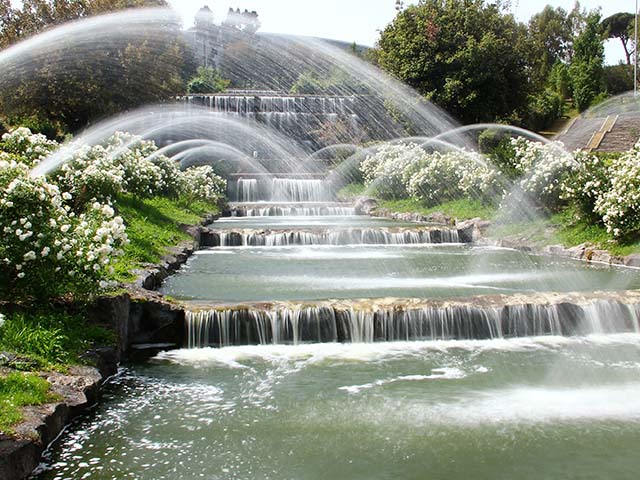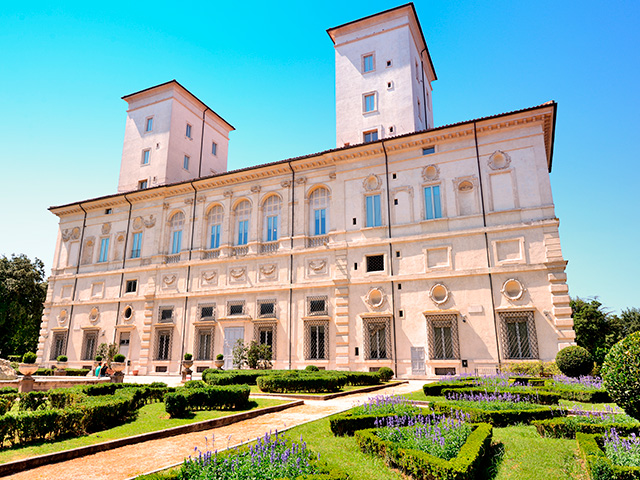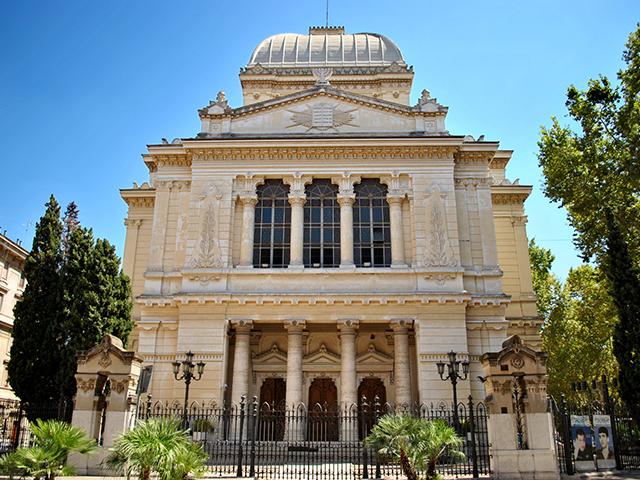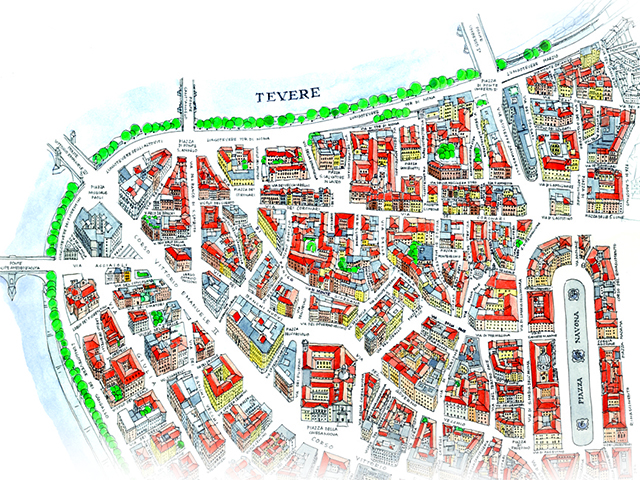10 things you can't miss in Villa Pamphili
Everything you need to see in Villa Pamphili: curious facts, location, how to get there and much more.Together with Villa Borghese, Villa Pamphili is one of the most beautiful parks in the heart of Rome. It is also one of the biggest parks, after the park in Appia Antica, with a surface of 184 hectares. It can be accesses through 4 main entrances (Via Aurelia Antica, Via San Pancrazio, Via Leone XIII and Largo Casale Vigna Vecchia) and it can be visited from 7am until sunset.
Here are the 10 unmissable thing in Villa Pamphili, a wonderful place, set in greenery!
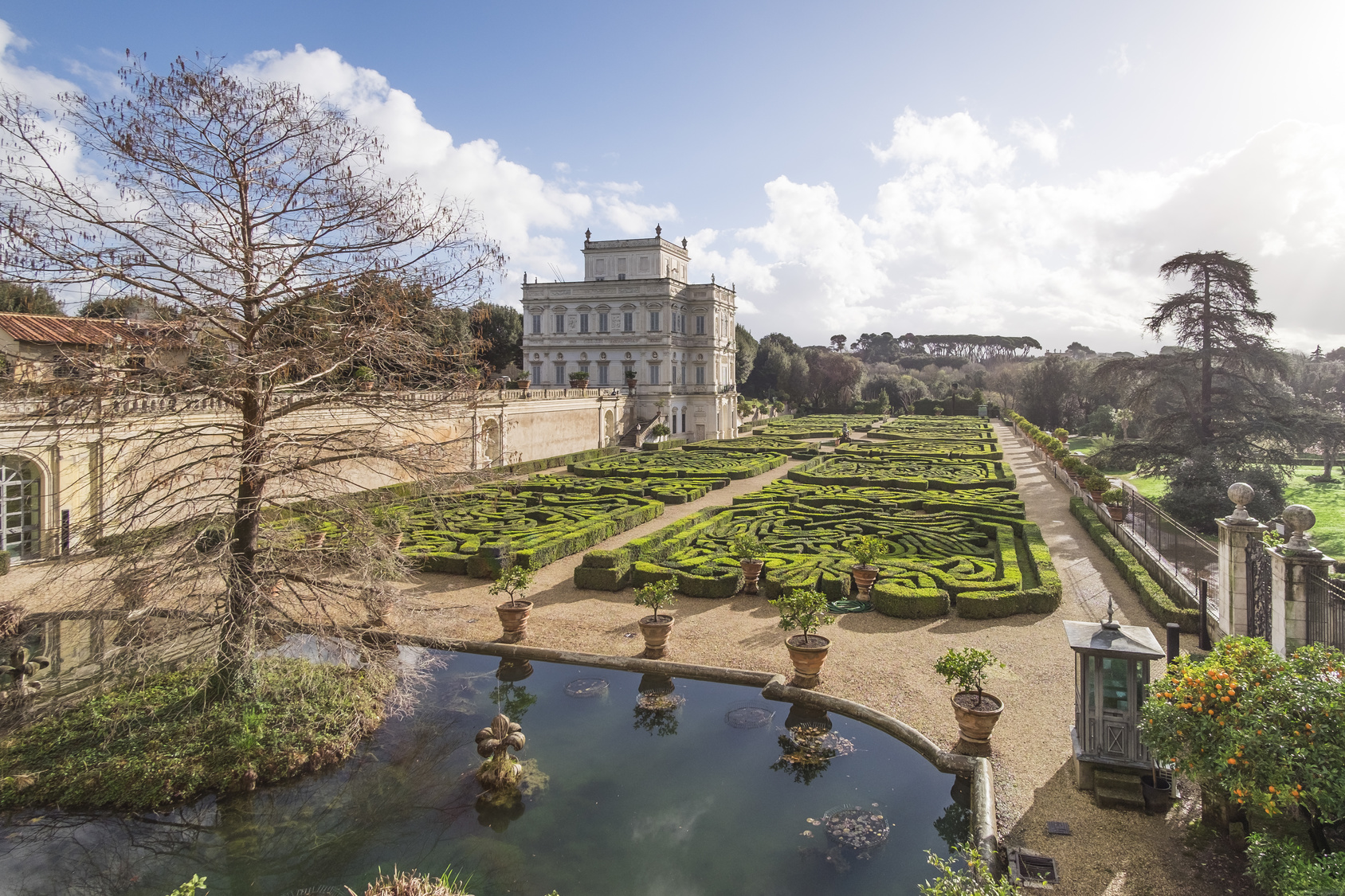
Brathtaking views of the Casino del Bel Respiro - Villa Pamphili (Rome)
1. The Casino del Bel Respiro - Villa Pamphili
The Casino del Bel Respiro is probably the most suggestive location in Villa Pamphili. There, you won't feel like you are in Rome, but in the countryside.
Strongly desired by Prince Camillo Pamphili in 1644, t was meant to display his collection of ancient statues.
The Casino del Bel Respiro was designed by esculptor Alessandro Algardi, to express the magnificence of the family. The palace, decorations and gardens are inspired by ancient buildings like Villa Adriana in Tivoli, where Algardi went to study and draw. The interior of the palace has many rooms and halls embellished by painted plaster.
Likely, the most beautiful place of all is the secret garden, embellished by hedges cut in many different forms, one cut in the form of a fleur-de-lis (coat of arms of the family). Initially, there was a fountain at the centre.
In the 20th century, the palace of Villa Pamphili was restyled, with new frescoes and moving some walls, including a wall that was taken down to create a dining room, which hosts a very long table thought for official lunches. In fact, the building is nowadays the Prime Minister's Office and it is unfortunately closed to pubblic.
The Casino del Bel Respiro hides many curious facts and secrets, por example, the one-and-a-half-kilometer-long tunnel conecting the Casino with the Vatican, way out built by the Popes, because the Casino was then outside the walls, or the time Gheddafi during his stay in Rome in 2009 built his tent inside the secret garden.
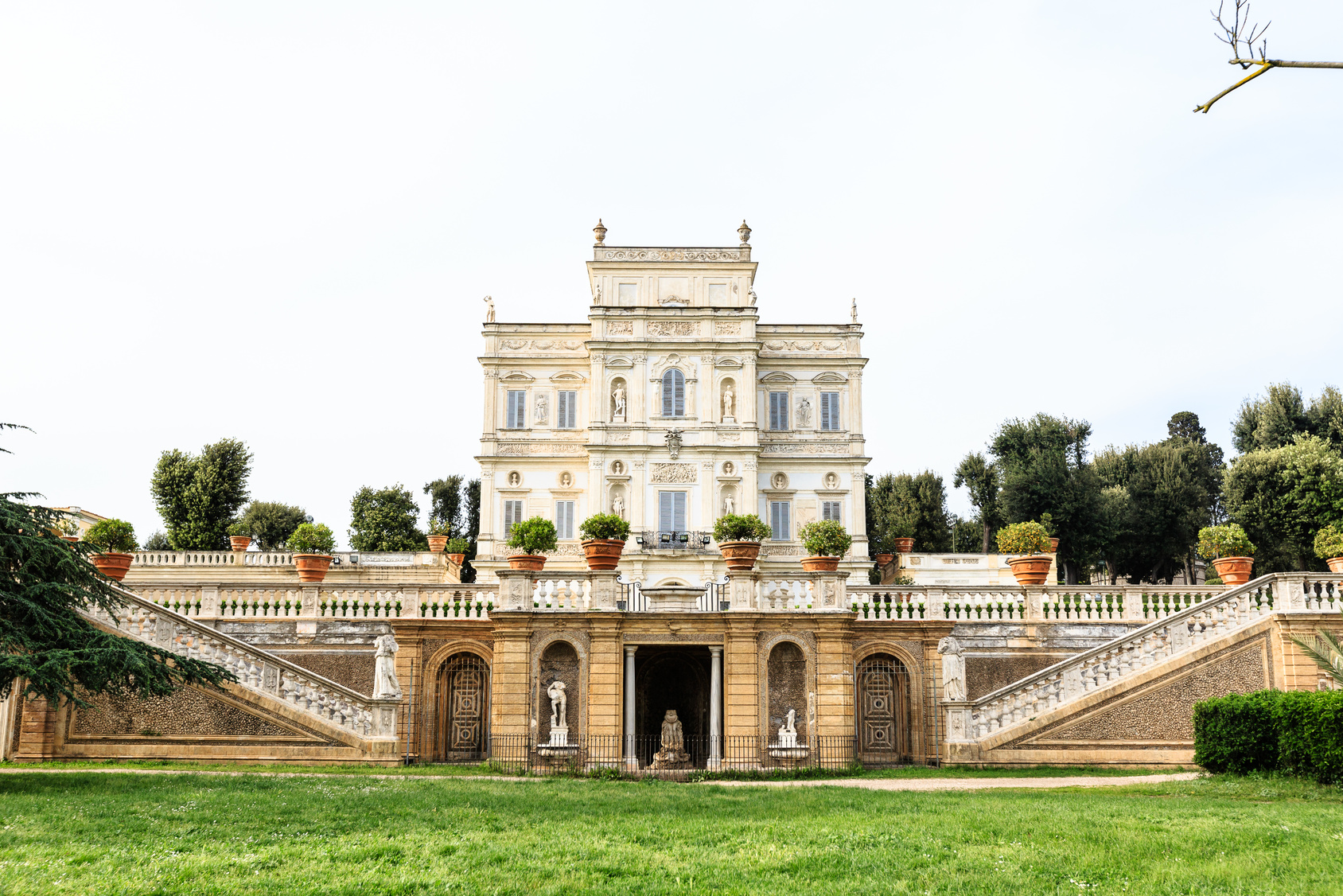
Casino del Bel Respiro - Villa Pamphili (Rome)
2. The Valle dei Daini - Villa Pamphili
The Valle dei Daini (valley of the deers) extends over 60,000 square meters, and it was in the past the old hunting reserve of the Pamphili family. Later, it became, thanks to Busiri Vici a landscape garden inhabited by deers in freedom, until it became an unnaccessible jungle after half century of abandonment. At the beggining of the years 2000 it was reclaimed and rearranged.
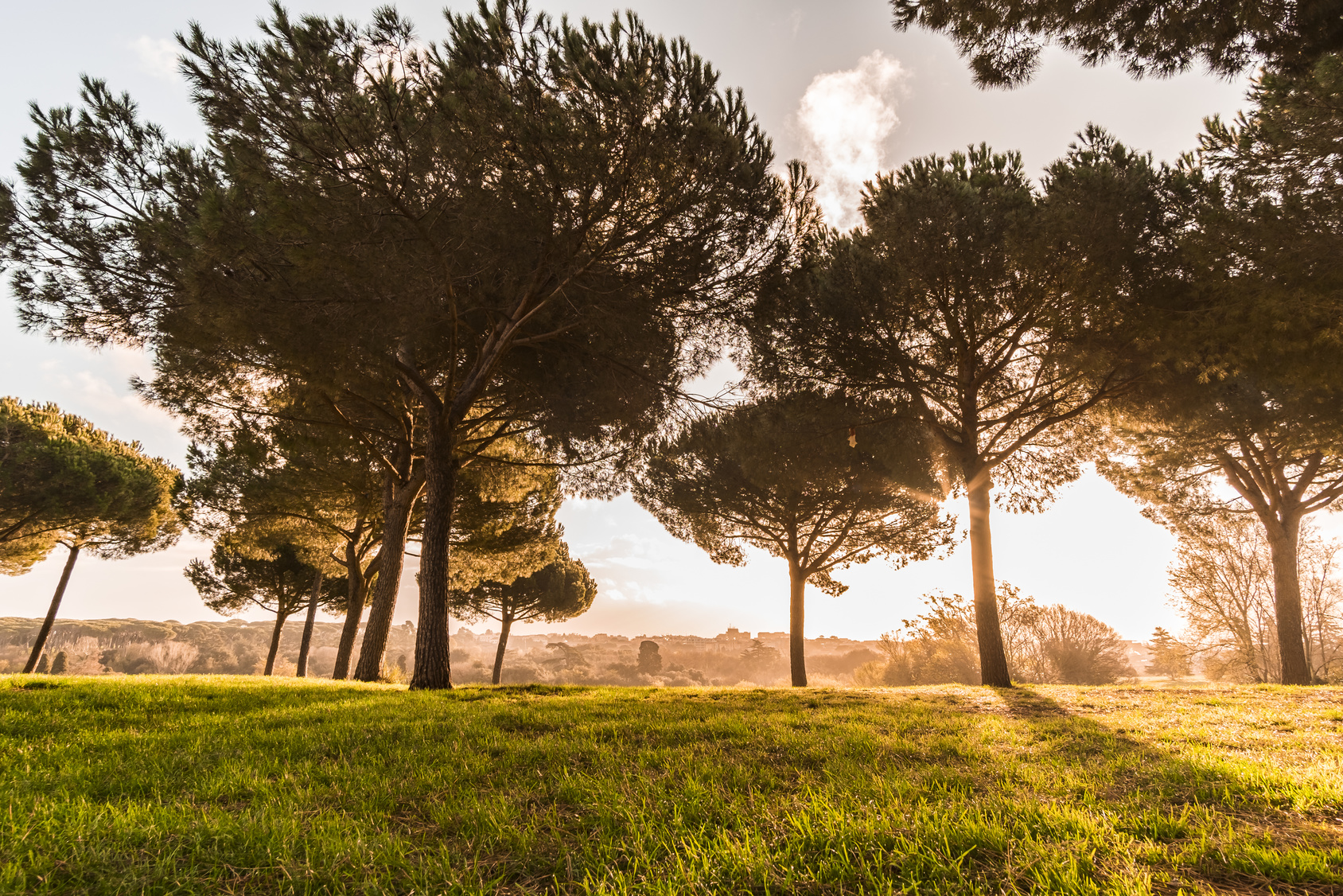
Views of Valle dei Daini - Villa Pamphili (Rome)
3. The Lake of the Belvedere - Villa Pamphili
Another unmissable location is the Lake of the Belvedere. A natural lake inside Villa Pamphili, surrounded by trees of every kind, wonderful paths and three belvederes. After the recent requalification, the lake shines even more than it used to.
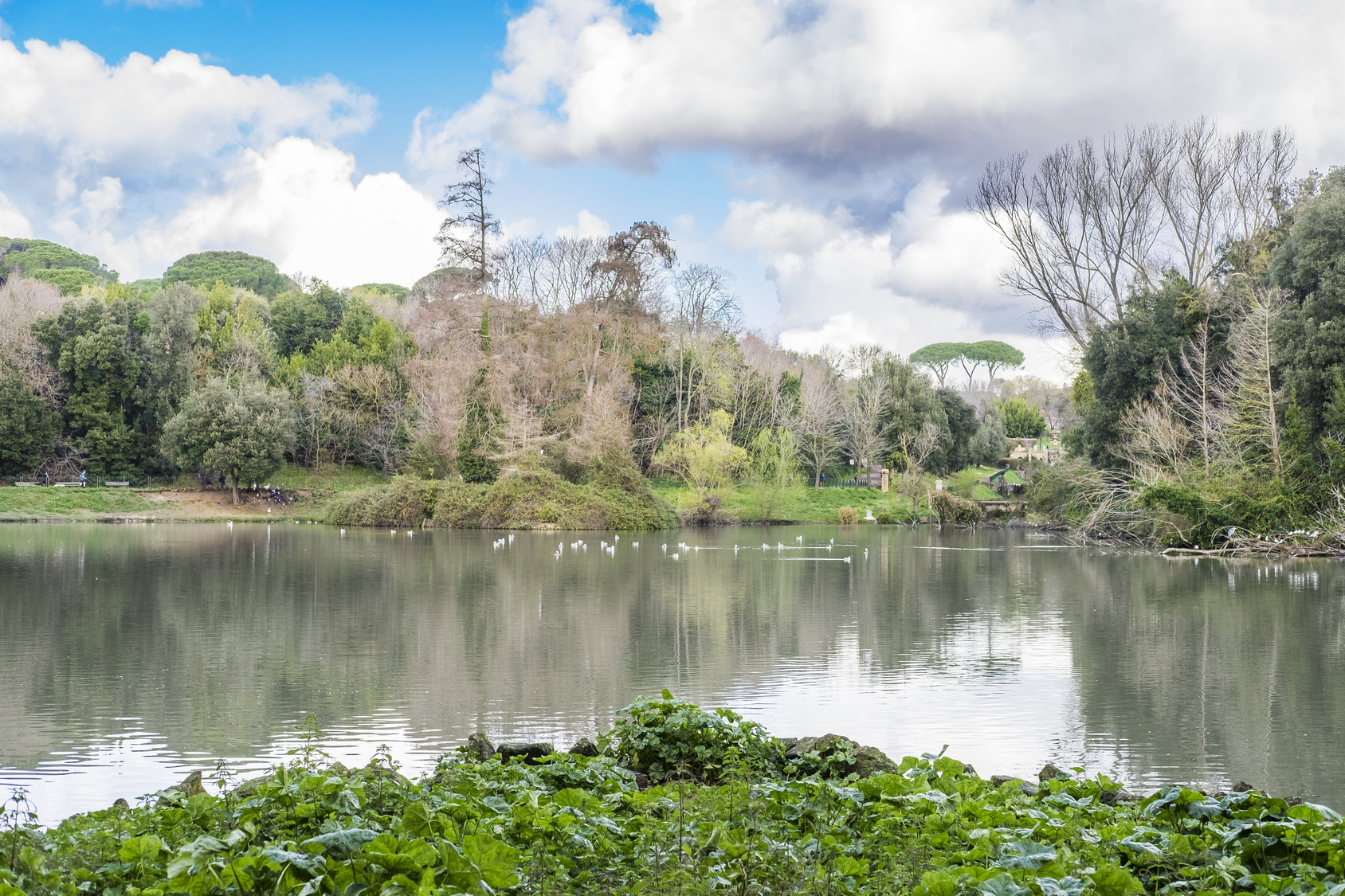
Views of the Lake of the Belvedere - Villa Pamphili (Rome)
4. Fountains of Villa Pamphili
Inside Villa Pamphili there are uncountable fountains, including:
Fontana del Mascherone
Close to Fontana del Tevere, there is the fountain of the "Mascherone", formed by a rectangular wall, with an "eye", which might have contained a bust. In the inferior side there are two lateral spirals decorated in the higher part by two small masks and two small dolphins, placed at the sides of the large mask.
Fontana di Venere
The Fontana di Venere (Fountain of Venus) is also known as "Fontana dell'Annunziata", since it is a bronze copy of a fountain made in 1629 by Pietro Tacca for the Ss. Annunziata Square in Florence.
The fountain has a wide marble basin built around the year 1850 by Lady Mary Talbot, wife of Andrea Doria Pamphilj.
Fontana del Giglio
It is a beautiful stone fountain built by Algardi in the 17th century, meant to be placed in Villa Vecchia, and then located in the highest point of the water river that crossed the villa from north to south, in order to give more value to the perspective points.
The name of the fountain comes from its own shape, that is, a "giglio" (fleur-de-lis), reminding of the coat of arms of the noble family.
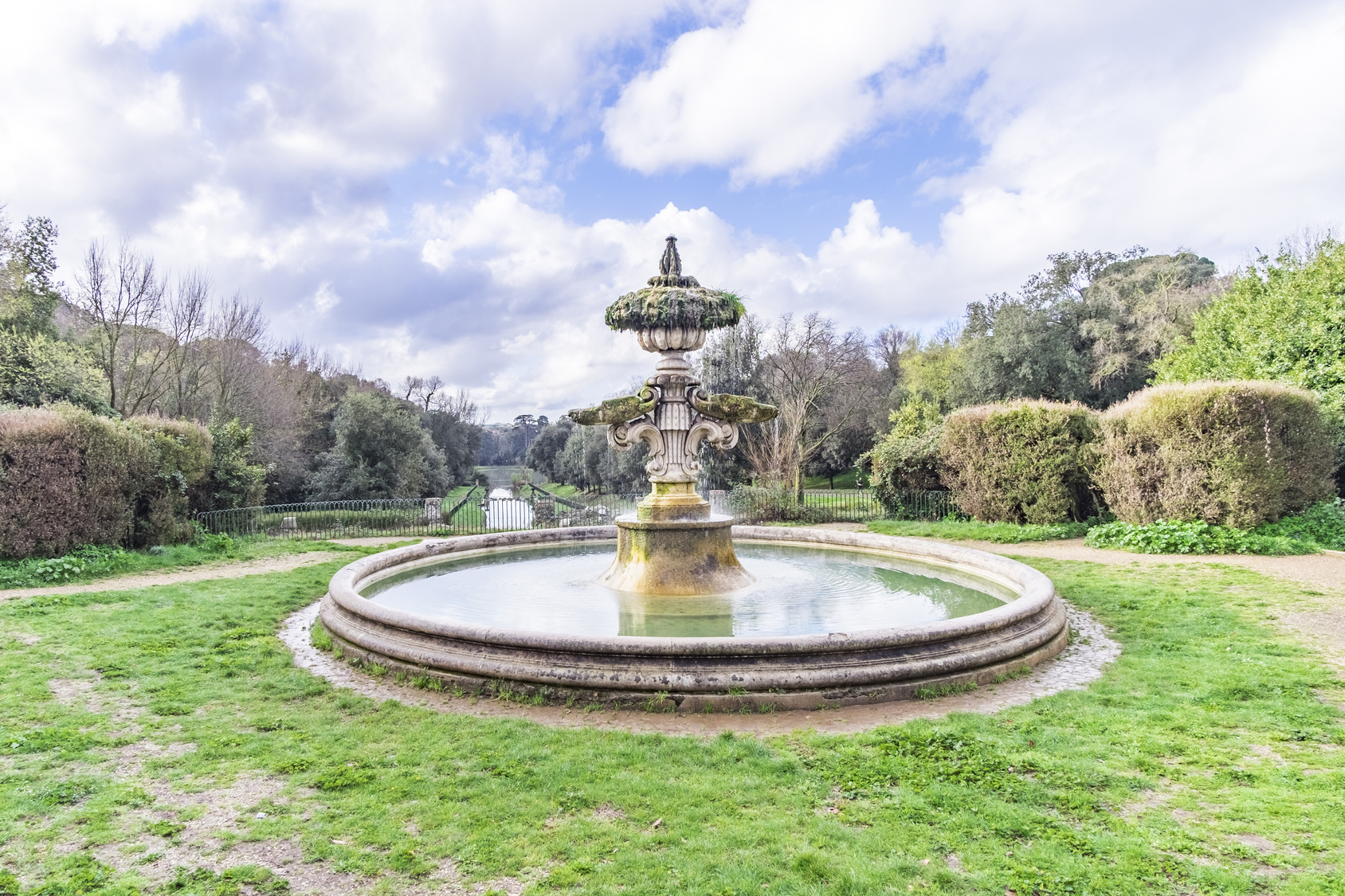
Fontana del Giglio - Villa Pamphili (Rome)
Fontana delle Lumache
Initially, the "Fontana della Lumaca" was built by Bernini for Piazza Navona, but Pope Innocence X thought it was too humble and it was donated to the sister-in-law Olimpia Maidalchini, also known as Donna Olimpia or Pimpaccia. She placed it in Villa Pamphili. The original fountain by Bernini was destroyed by the bad weather and it was replaced by a copy in the 19th century.
Fontana del Tevere
In front of Villa Vecchia there is the Fontana del Tevere, formed by a stone mixtilinear basin. At the center of the fountain there is a sculpture of a reclined peperino river deity.
Fontana della Cascata
Underneath the berm wall there is the Fontana della Cascata, formed by a series of interconnected basins flowing into a lake. The fountain is at the feet of the Fontana del Giglio.
Fontana del Cupido
In front of the exedra there is the Fontana del Cupido, named precisely after Cupido, which stood in the center and nowadays only the feet remain at the base. The circular basin is supported by four pillars in the outside façade of whom are two male and two female fauns alternated.

Fontana del Cupido - Villa Pamphili (Rome)
5. The Villa vecchia - Villa Pamphili
The so-called Villa Vecchia (Old Villa), the family house, placed close to the old Trajan acqueduct, the Villa is formed by a main building and two arms enclosing a courtyard with the entrance to the house. Inside, the villa is decorated with plasters with the form of a dove and a fleur-de-lis, heraldic symbols of the Pamphili. Today, the Old Villa is a museum, which is unfortunately open to public only under request.
Close to the villa, there is the Giardino dei Cedrati, full of citrus trees.
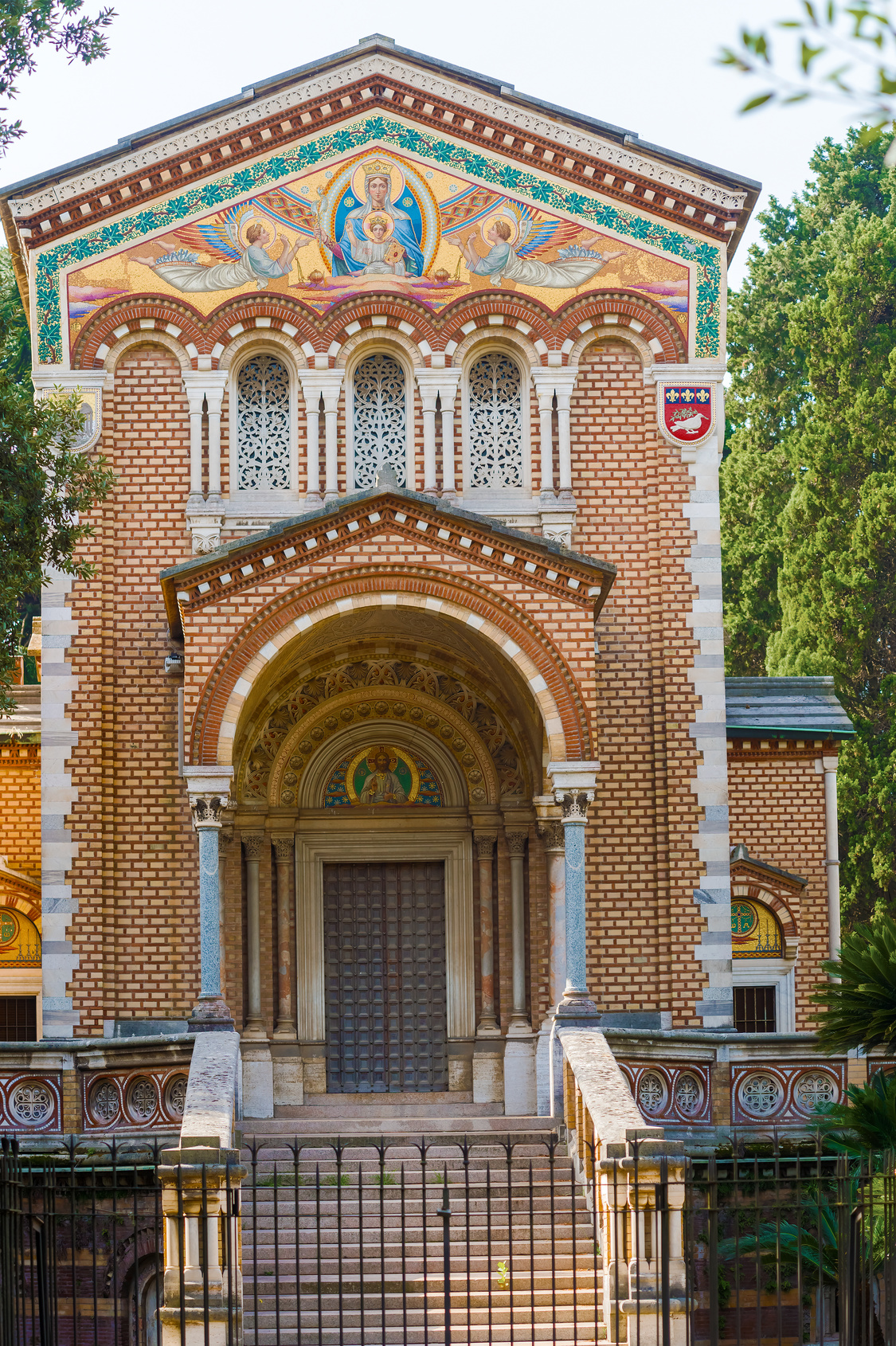
Doria Pamphili Chapel - Villa Pamphili (Rome)
6. The Doria Pamphili Chapel - Villa Pamphili
The last building made in Villa Pamphili was the family chapel, strongly desired by Alfonso Doria Pamphili to hold the remains of his father and brother.
Built by architect Odoardo Collamarini between 1896 and 1902 in a neogothic style, the Doria Pamphili Chapel is at the end of Viale del Maglio, where the Fontana dei Delfini was originally set, and which was destroyed during the battles of the Risorgimento in 1849 between the supporters of Garibaldi and the French.
After being abbandoned for many years, in May 2006 the chapel was cleaned and it was visitable for just that one day when it was reopened. After, the chapel was enclosed by a wrought iron fence to protect it from being vandalised.
7. The Garden of the Theatre - Villa Pamphili
One of the most important areas of Villa Pamphili is the Garden of the Theatre, built between 1664 and 1652. In 1950 the family architect, Andrea Busiri Vici, restyled it, inspired by the English gardens.
The Garden of the Theatre is named after the big built-in semicircular exedra used for open-air theather and music shows.
The exedra is flanked by the "Ninfeo dei Tritoni" or "del Satiro", a rusticated grotto, decorated with fake stalactites, two statues of mermaids and two statues of fauns, immersed in the water.

Exedra of the Garden of the Theatre - Villa Pamphili (Rome)
8. The Garden of the Greenhouses - Villa Pamphili
The Garden of the Greenhouses was originally filled with citrus trees. At the end of the 19th century the green area looked like a series of curved paths enclosing groups of tress, flowerbeds with differents designs, many palm trees and it had an exotic look. Today, it is being restored with the aim of giving the garden its beauty back.
9. The Arco dei Quattro Venti - Villa Pamphili
The architect Andrea Busiri Vici, the same who designed the Garden of the Theatre, designed the Arco dei Quattro Venti (Arch of the Four Winds), also inside Villa Pamphili, close to the entrance of Porta San Pancrazio.
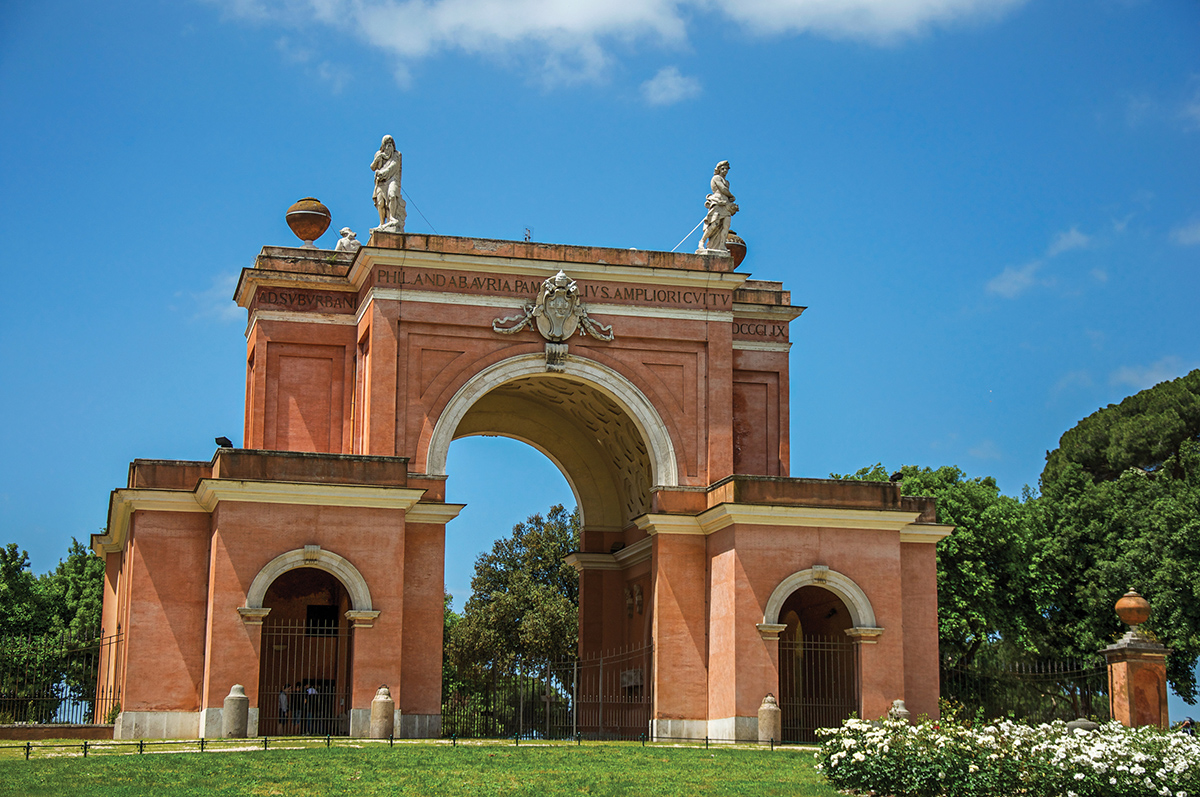
Arch of the Four Winds - Villa Pamphili (Rome)
10. Palace of Villa Corsini - Villa Pamphili
The last unmissable place in Villa Pamphili is the Corsini Palace, part of Villa Corsini, dating back to a period between the first and second decades of the 18th century. In 1849, the palace was damaged because of the fierce battles of the Gianicolo, but architect Busiri Vici restored it completely. Today, the Corsini Palace is a library and an exhibition center. From this side of the Villa there are breathtaking views over the Valle dei Daini.
The perfect spot to relax!
Useful information
- HOW TO GET THERE
From the Port of Civitavecchia go to the train station and take the first train bound for Roma San Pietro or Roma Trastevere.
From the Train Station of Roma San Pietro: take the bus 982 - towards Sta.ne Quattro Venti and get off at Leone XIII/Villa Pamphili (9 stops).
From the Train Station of Roma Trastevere: take the tram 8 - towards Casaletto and get off at Gianicolense/Colli Portuensi, then walk for 27 minutes (about 2km).
- TIMETABLES
Tha park of Villa Pamphili is open every day from 7am to sunset.
- PRICES
- Free admission to the park.



 PORT MOBILITY CIVITAVECCHIA
PORT MOBILITY CIVITAVECCHIA








